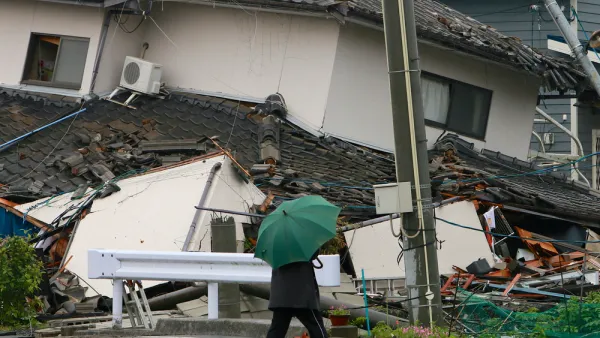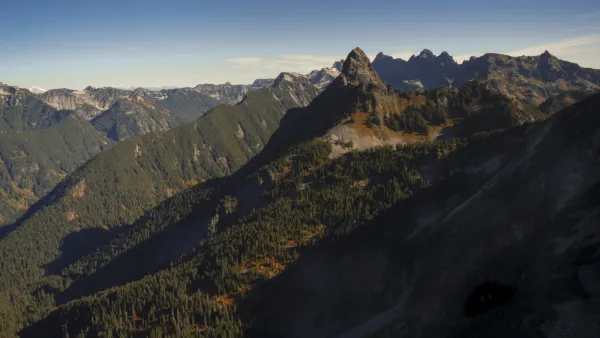Forget Hollywood's proclivity for destroying Los Angeles and San Francisco in movies like San Andreas—the greatest seismic threat in North America is in the Pacific Northwest.
Kathryn Schulz provides an in-depth look at an under appreciated seismic threat on the West Coast—not the San Andreas fault, but the Cascadia subduction zone. Writes Schulz: "Just north of the San Andreas, however, lies another fault line. Known as the Cascadia subduction zone, it runs for seven hundred miles off the coast of the Pacific Northwest, beginning near Cape Mendocino, California, continuing along Oregon and Washington, and terminating around Vancouver Island, Canada."
Schulz begins by citing the example of Japan's 2011 Tohoku earthquake, which reached a 9.0 on the Richter scale, to illustrate how deadly an event along the Cascadia subduction zone could be. The upper limit of Cascadia's potential is thought to be 9.2. For comparison's sake, the upper limit of the San Andreas Fault's power is estimated at 8.2.
The article goes on to describe, in vivid detail, what would happen in the even of the "Really Big One," which experts speculate would be the worst natural disaster in North American history. According to Kenneth Murphy, who directs FEMA's Region X, "everything west of Interstate 5 will be toast." Adds Schulz: "Everything west of Interstate 5 includes "Seattle, Tacoma, Portland, Eugene, Salem (the capital city of Oregon), Olympia (the capital of Washington), and some seven million people." That would kill an estimated 13,000 people. Schulz also cites the expertise of Chris Goldfinger, who puts the odds of such an event occurring in the next 50 years at one in three.
The article concludes with in an incredible accounting of geologic history, describing the work of historians and geologists in the United States and Japan to find evidence of the last major earthquake on the Cascadia subduction zone in 1700.
FULL STORY: The Really Big One

Analysis: Cybertruck Fatality Rate Far Exceeds That of Ford Pinto
The Tesla Cybertruck was recalled seven times last year.

National Parks Layoffs Will Cause Communities to Lose Billions
Thousands of essential park workers were laid off this week, just before the busy spring break season.

Retro-silient?: America’s First “Eco-burb,” The Woodlands Turns 50
A master-planned community north of Houston offers lessons on green infrastructure and resilient design, but falls short of its founder’s lofty affordability and walkability goals.

Test News Post 1
This is a summary

Analysis: Cybertruck Fatality Rate Far Exceeds That of Ford Pinto
The Tesla Cybertruck was recalled seven times last year.

Test News Headline 46
Test for the image on the front page.
Urban Design for Planners 1: Software Tools
This six-course series explores essential urban design concepts using open source software and equips planners with the tools they need to participate fully in the urban design process.
Planning for Universal Design
Learn the tools for implementing Universal Design in planning regulations.
EMC Planning Group, Inc.
Planetizen
Planetizen
Mpact (formerly Rail~Volution)
Great Falls Development Authority, Inc.
HUDs Office of Policy Development and Research
NYU Wagner Graduate School of Public Service



























